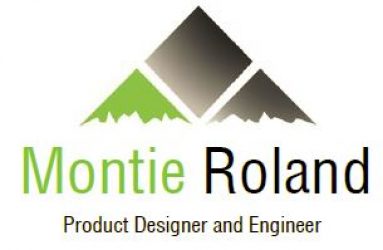Developing a successful new product requires funding and resources. Lets spend a few minutes talking about how all those fit together with the product development process.
Developing A Product
Transcript
Audio File: 2014 Feb 12 – Developing A Product.mp3
Audio Length: 8:07 minutes
Hello. My name is Montie Roland. I’m with Montie Design in Morrisville, North Carolina.
Whenever you undertake the development of a new product, there’s a series of decisions that go into that product at a very early stage. One of the things that’s very, very important to do is to validate that you should build the product. Because if you build a product that won’t sell, then you’ve tied up resources in something that will never generate a return on investment. So one of the things that I think is very, very important is to develop a skill set of saying, Okay, here’s why I think this product will sell; being able to work through a process of helping you get to that validation. And then being able to take the results of that validation and make a go or no-go decision. This really applies to all practitioners, be it corporate in a monster company, a medium-sized company, or an entrepreneur or inventor.
So, let’s start out with a case of being an inventor. Or, actually, I take that back. Let’s look at it from a hundred thousand foot view. So, some of the things that have to happen before you can sell your product – one is that you’ve got to have the money to develop it; you’ve got to have the money to manufacture the first run; and then you’ve got to have the money to market it. Many times – individuals especially; entrepreneurs or what have you – will say I’ll find the money; let me develop the product first. Well, in a way they’re getting the cart before the horse for a couple of reasons. One is that you want to make sure that your development of products that someone will help you fund (if you’re looking for that kind of thing; you’re looking for external funding), and then the other is that you want to make sure that you’ve thought through these first stages. So, things that need to be considered, or issues that need to be considered: One is what’s the development cost? And can you afford the development cost? Two, what does it cost to manufacture the products? Can you afford that first run of products? Three, what does it cost to market the product? And do you have everything in place that you need to do this? Now, in a big corporation this is broken down into segments, generally. So, there’s a group within the corporation that handles marketing. There’s a group that handles sales. A lot of product specifications are determined by the sales group, because they see a hole in the market, or they have requests from clients that want Product A. So, in a larger corporation you’ll have a multi-service team that will look at this from two directions – look at it from an accounting standpoint or a financial standpoint, a business standpoint, an engineering standpoint. And so go through those motions before the product is actually kicked off, just to make sure it’s the right product and they’ve got a way to pay for it.
Other organizations that are smaller may skip parts of this process. Entrepreneurs are notorious for doing this, because the fun part is designing the product; the fun part is usually not figuring out how to pay for it. So a lot of times entrepreneurs will put a lot of work into a product because they think it will succeed based on not a lot of research, and then they’ll get to the end of the product development cycle and either have developed the wrong product (which won’t sell), or they’ve just developed a product that won’t sell; or, because they’re out of resources, now all of a sudden, they can’t go any farther. We see a lot of the latter. That’s pretty common. So there’s a lot of great products that sit on the shelf and die.
So before you undertake that project, I would say consider – Do you have the money for each step of the way? And really you need to have the money for enough to keep you going through the ramp up of the adoption curve. And the adoption curve is how quickly people pick up a product or buy a product after its released; how long does it take the market to respond to that product. And that adoption curve is definitely there. It’s exponential, so it’s flat at the bottom when you’re first starting out; and then at some point we all hope it goes exponential vertically.
And then the next question is do you have the resources to pull it off – Do you have the engineering resources? Can you afford to buy them if you don’t? Do you have the management resources? Do you have the facilities resources? Most companies fail because of the management, not because of the product. Most product given companies do.
So I think its important to lay these things out, make a decision about them, whether or not you have them; make a decision about, you know, is it the right product; is it the right market; is this a difficult market. And that way you’ve made these decisions upfront before you’ve committed a lot of time and money to something that you may realize later on wasn’t such a good idea. So by doing this you’ll actually save yourself effort in the long run; you’ll be better prepared to design your product; and there’ll be less risk as part of the process.
If you have any thoughts or comments about my comments or thoughts, please don’t hesitate to give me a call – 1-800-722-7987. Shoot me an email – Montie (M-O-N-T-I-E ) @ Montie dot com. Or, visit us – www.montie.com. Thanks and have a great day.
END AUDIO

